Runners, walkers, and backpackers are at risk for blisters on their feet. Even the smallest ones can be painful. Hikers can also get them on their hands; possibly from using trekking poles or from chopping firewood; either way, they don’t feel good.
[the_ad_placement id=”in-text-1-type-r”]There are also blisters from sunburn and don’t forget poison ivy. The bottom line is they are all painful and will possibly hinder you in some way during your hiking trip.
This article is going to look at how to care for a blister including the types of blisters, their causes, prevention, and treatment.
Types & Causes of Blisters
There are several types of blisters with various causes and all of them can be experienced on the hiking trail. Prudence says to understand what blisters are, how they are caused and especially how to care for a blister.
Most hikers are familiar with blisters on their feet. But you can have trouble with other blisters. Let’s take a look.
Protect Those “Boats”: Water Blisters
This type of blister is caused by friction, something rubbing on your skin continuously. The skin gets hot and the body reacts by sending serum to protect the underlying skin. A common water blister happens on your feet if your boot or shoe does not fit properly. This is a critical point.
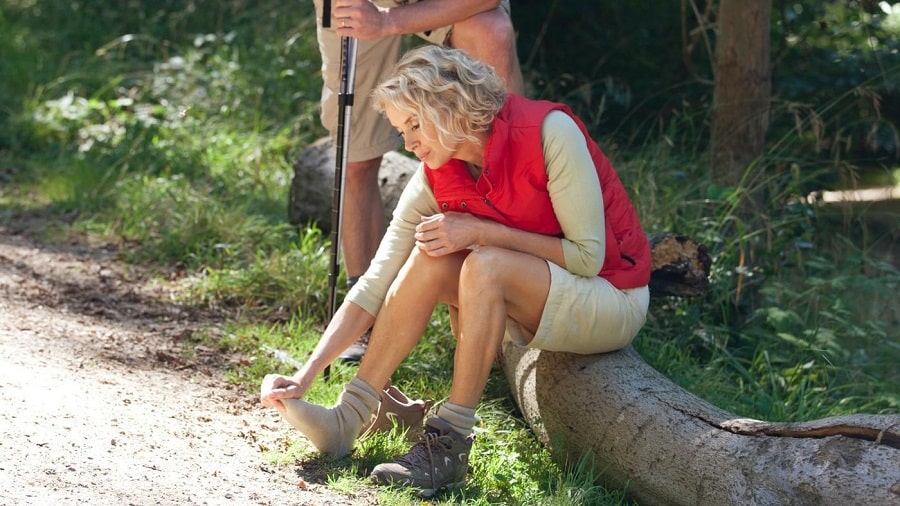
Another area you could develop blisters is on your hands from continuous, repetitive motions such as chopping wood or using trekking poles. Take a look at our piece on how to break-in your hiking boots to prevent those blisters from appearing.
Typically these blisters show up at the base of your index finger down to the base of your thumb. Sometimes it will go across the palm at the base of the fingers. Your grip will determine where the blisters form.
Hot & Heavy: Burn Blisters
Burn blisters can come from contact with something hot such as coals from a campfire, or they can come from sunburn. Both situations can be bad depending on how much of your body is covered by the burn.
It may also be possible to get friction burns in areas that are a nuisance. Some folk get friction burns on their inner thighs when wearing shorts. You may get a friction burn on your inside shoulder/armpit area if you pack doesn’t fit you right.
Basically, any place where your skin is going to rub against something continually there is a high probability you could get a friction burn.
Blood, Sweat & Maybe Tears: Blood Blisters
Blood blisters usually occur where has been some sort of impact such a hammer to the thumb or a pinch or squeeze such as getting your finger caught in a door. The blister will turn dark because blood has rushed to that area to try to help heal the damage.
A blood blister can also form out of a water blister if there is prolonged weight and friction on the area. The fluid will turn from clear to pink to red.
Call Me Irresistible: Contact Blisters
Touching something that irritates the skin such as poison ivy/oak. If your allergy is severe enough you could develop blisters.
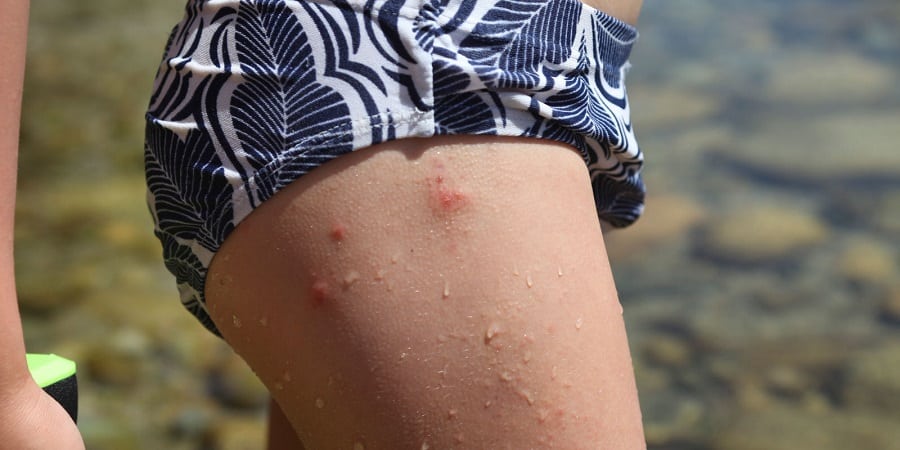
As long as the oil from these plants is still on your clothing or skin you could get it in other areas or pass it to others. If the oil has been washed off there is no danger of passing it on.
Blister Prevention: Who Needs Them
Probably the best advice is to not get blisters. Sometimes that is easier said than done. But if you can be proactive and try to prevent blisters, your hiking trip will be much more enjoyable. Even a day trip can be miserable if you have a friction blister on your toe.
Each of us may be prone to certain types of blisters because of our gait, our posture, how our equipment fits, etc. There won’t be a “one size fits all” prevention program, but for the most part, the things we will address are common to most everyone.
Ease on Down the Road: Water Blisters
To prevent water blisters that are typically caused by friction make sure your footwear is properly fitted. Never go cheap on hiking footwear. You need an excellent shoe or boot that fits perfectly.
With new technology, there are plenty of lighter weight shoes that can accommodate you and a pack on a multiday hike. It is good to have your foot professionally measured to make sure you get the right fit. Some people will go as far as having their gait studied to see if their ankles roll and assess where their foot needs the support.
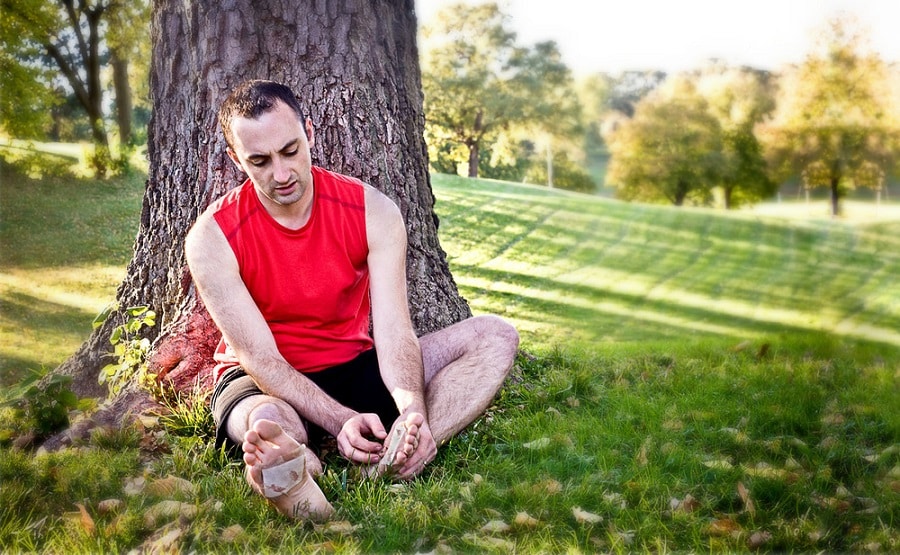
In addition, wear wool or synthetic socks that wick away moisture. If you have new footwear make sure you break them in. Wear them around the house for a couple of days. Take a few days hikes before moving into a longer multiday hike. Do check on our article on how to choose the warmest socks for more information.
As you hike be aware of any hot, burning spots on your feet. It may be a blister in the making. Stop and treat it before it gets worse.
Wear gloves for any type of repetitive motion such as shoveling, chopping, rope climbing and such. Protect your hands as necessary.
Too Hot to Handle: Burn Blisters
Be extra cautious around open flames. Wear fire mitts if available. Beware of light nylon/poly fabrics that melt quickly when exposed to extreme heat.
For sunburn make sure to use sunscreen and keep covered. Don’t forget your nose, ears, and lips. Wear a hat especially if you are bald or your hair is thinning. You can get 3rd degree burns from the sun so it is important to take precautions, especially if you are fair skinned.
Local Blood Drive: Blood Blisters
Blood blisters usually occur where has been some sort of impact such a hammer to the thumb or a pinch or squeeze such as getting your finger caught in a door.
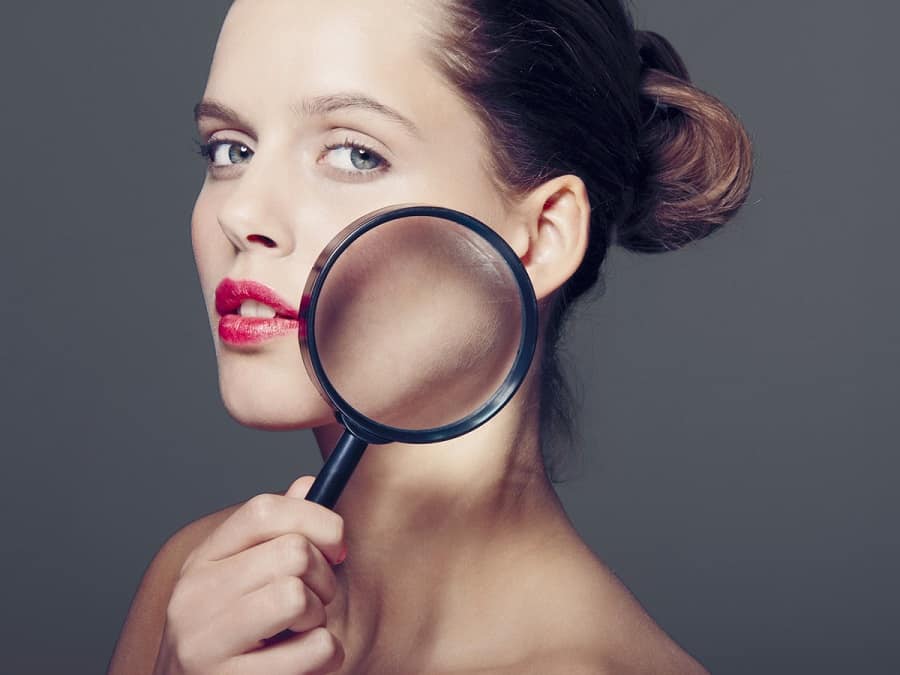
As mentioned above they can occur over a prolonged period of friction and weight – such as hiking. Prevention of this type will be the same as water blisters – stop it before it gets this bad.
Here’s My Number: Contact Blisters
I am reminded of the old adage: leaves of three let them be. Especially on hiking trips in unfamiliar areas make sure you are knowledgeable about the things you are allergic to and keep an eye out for them as you go down the trail.
If you have to bushwhack make sure you have on long sleeves, long pants, wear gloves and protect your face.
[the_ad_placement id=”in-text-2-type-r”]In severe allergies, anaphylactic shock can happen in which the respiratory system begins to swell and eventually could close off your airway. If you have this type of allergy and are going into a remote location make sure you carry an Epipen or two – it could be a life saver.
Blister Treatment on The Trail
When on a hike, weight is always an issue. How much can you carry? What do you need vs. what do you want? One area to make sure you at least have the very basics is first aid.
You never know when an injury is going to happen and it is best to be prepared with just a few things than nothing at all. The following is a brief list of items you should consider carrying on your trip.
| Tools | Medications | Bandages |
| Tweezers | Antibiotic ointment | Wound closure strips |
| Safety pins | Antiseptic towelettes | Band-Aids |
| Signal device (whistle/mirror) | Antihistamines | Moleskin |
| Safety matches/fire starter | Epipen | ACE bandage |
| Mylar blanket | Ibuprofen | Bandana (for splints or tourniquet |
| Drinking water | Gatorade powdered drink | Duct tape |
For those who don’t know what moleskin is; it is a great blister treatment that works like a charm on most blisters.
It is made of woven cotton that adheres to an adhesive backing. The moleskin comes in sheets of about 3” x 4” and also in pre-cut shapes for several sizes of blisters. We will address its use in the paragraph below.
Don’t Rock the Boat: Water Blisters
The cardinal rule of blister treatment is not to puncture them. Puncturing the blister makes you susceptible to infection. Small blisters should go away without any treatment. However, if the blister is in a spot that is still going to get a dose of friction you need to take measures to keep it from getting worse. That being said, there is a camp that says to puncture the blister. Here is the treatment no matter which way you decide to go.
First, clean the area with alcohol. Using a sterile needle (you carry one in your pack, right?), puncture the blister and massage the fluid out.
Keep the cap of the blister in place to protect the new skin beneath in. Apply antibiotic ointment to the blister.
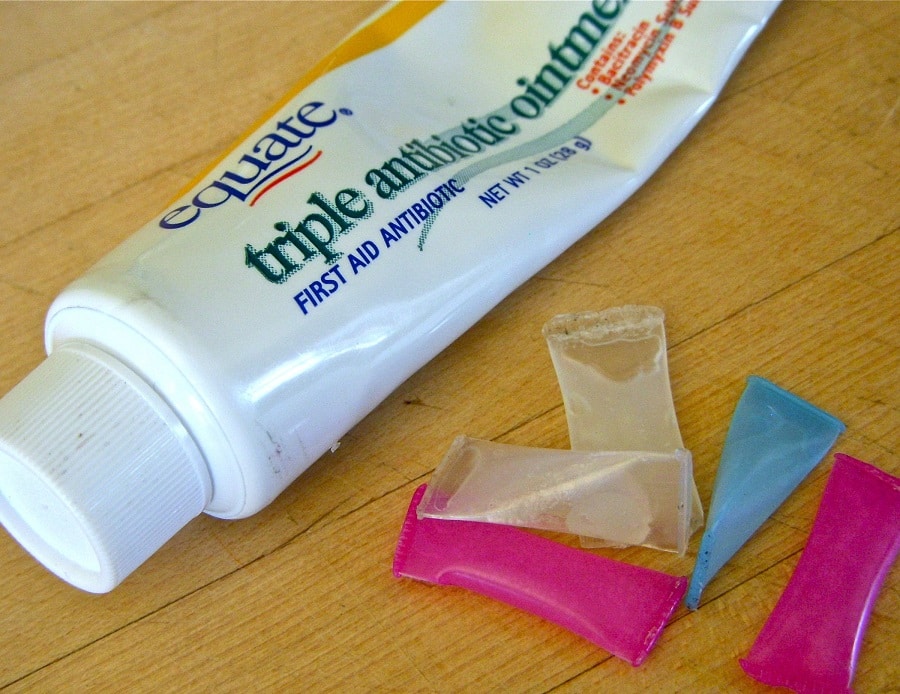
From this point on the treatment is the same puncture or not. Cut a rounded piece of moleskin, and then cut out the center so it is a bit larger than the blister. It should look like a donut. Place the moleskin over the blister area with the blister in the donut hole.
You may have to stack a couple layers together to be higher than the blister. This is creating a pocket of protection around the sore area. Then seal the whole donut with a lid of moleskin. On top of this apply a patch of duct tape or athletic tape to secure the moleskin in place.
Keep it bandaged for up to three days; then wash and re-tape. If the area is red, swollen and oozing, see a doctor as soon as feasible.
A Heated State of Affairs: Burn Blisters
With burns, you need to act fast. The burning continues even after the heat source is gone. Acting fast will help control the pain and may even prevent a blister from forming.
If possible, plunge the burned area into cold water and keep it submerged at least ten minutes. Keep hydrated. Administer ibuprofen to reduce pain and inflammation.
A first degree burn will show up as red, painful skin.
A second degree burn will bring on painful blisters. Keep the area moist with a moisturizer and cover with gauze. If you have a 2nd Skin Moist Burn Pad, use that instead. When the blister breaks, gently peel off any dead skin, clean the wound and apply antibiotic ointment. Apply dressing, keep covered until healed.
A third degree burn will show black charred skin if from an open flame or a pale, translucent skin if by scalding. Either could happen on the trail. Treatment includes cleaning the wound, applying antibiotic ointment and a gauze dressing.
Third degree burns about 1” in diameter will most likely need a doctor’s attention. As long as you keep it clean and covered you should be okay until you get off the trail.
Second and third degree burns that cover 15-20% of your body are life threatening. Burns to the face are also of concern as swelling can cut off airways. This type of injury calls for evacuation to a hospital – do not delay.
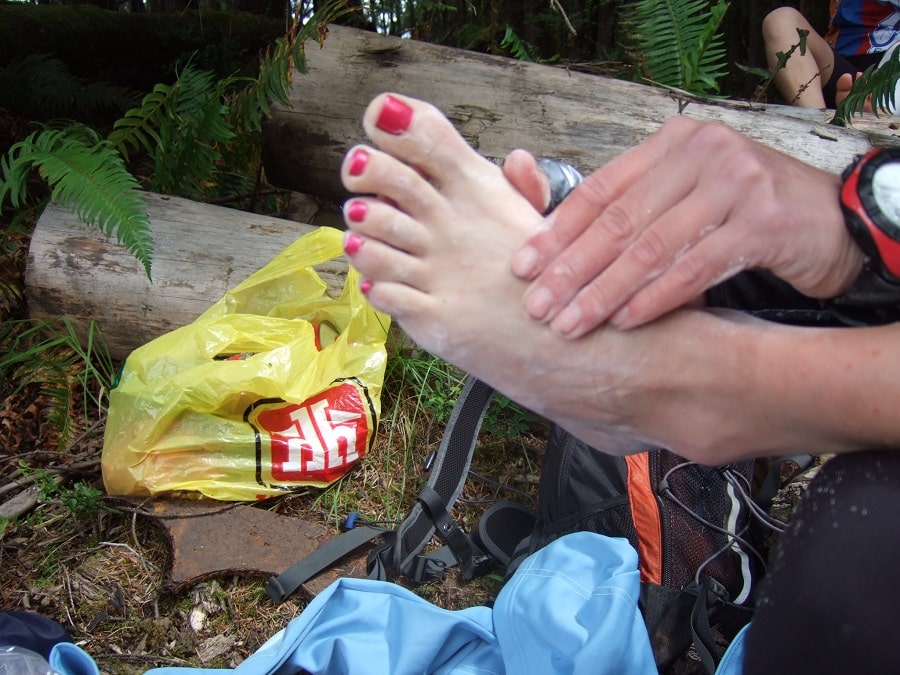
To treat sunburn, keep hydrated; apply aloe type lotion; apply cool compresses. Take ibuprofen for pain and to reduce inflammation. Keep the area from continued exposure to sun.
Get the Blood Work Done: Blood Blisters
DO NOT puncture blood blisters. There is a great chance of infection because of a direct line to your blood stream. You may have to build padding up around it similar to a donut to protect it and keep it from popping. If the blood blister pops it requires immediate attention and hopefully you will have the tools with you on the trail.
Clean the area with alcohol wipes. Lance it in at least 3 places (so the blood and fluid is forced out when you walk). Gently squeeze out as much blood as possible. Apply a thick layer of antibiotic ointment.
Place a gauze pad over the blister and wrap the area to keep the gauze in place. Check the blister 3 times a day checking for infection; reapply ointment and a new dressing. If on your foot, most likely area, keep off your foot for a couple of days and keep it elevated. This may not be possible while on the trail, but at least take it very easy.
If you have to keep going, disperse your pack among the others in your group to lighten your load.
An infected blister will be red and swollen. There may be red streaks running up the limb. You may have a fever and pain. The wound may be oozing pus. See a doctor as soon as feasible.
Keep in Touch: Contact Blisters
Blisters from poison ivy, oak and sumac can be a nuisance. There is a delayed reaction in that the blisters do not form for 12 to 72 hours after contacting the plant. Contrary to popular belief, the rash and blisters are not contagious. Check out our article on ways to get rid of poison ivy for more options.
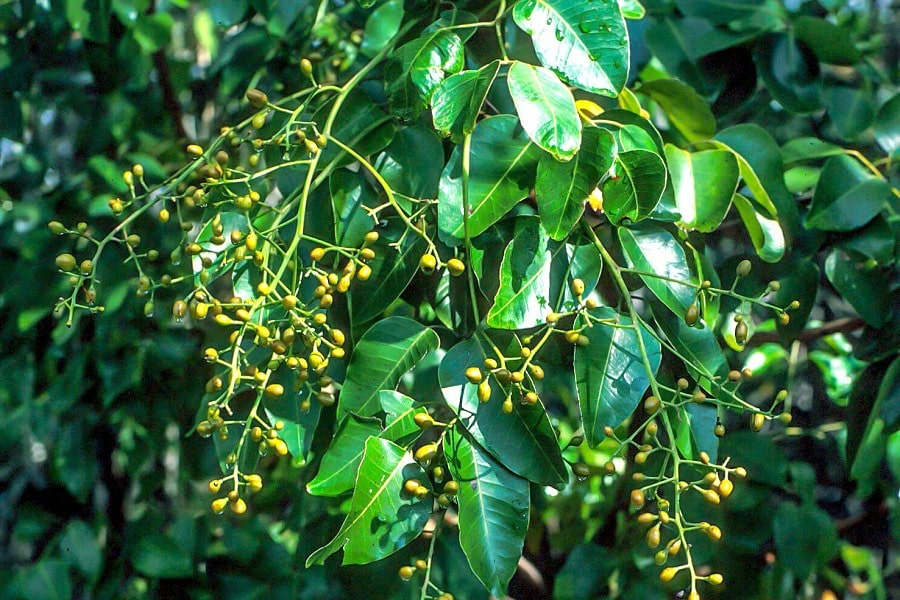
There isn’t much you can do for contact blisters when on the trail. In fact, the rash should totally disappear on its own in a couple of weeks. If you happen to have some anti-itch cream you can apply that.
Taking an antihistamine may also give some relief. If you have a serious allergy to these poison plants I hope you carry an Epipen that can give you a dose of epinephrine which could save your life.
If you have the following symptoms an evacuation may be in order:
- Trouble breathing or swallowing
- The rash covers most of your body
- Swelling, especially the eyelids
- Rash develops anywhere on face or genitals
- Severe itch with no relief
Conclusion
The best way to handle blisters is to avoid them. How do we avoid them? Take care of your feet and hands; use precaution around the fire; use sunscreen; and stay away from those leaves of three. If you can prevent blisters in the first place you will be a much happier camper.
[the_ad_placement id=”in-text-3-type-r”]However, if you do get a blister, treat it soon. Get the moleskin donut around it; that stuff really works and will give you relief and keep you on your feet. If the blister ruptures, clean it, apply antibiotic ointment and bandage. Repeat as necessary.
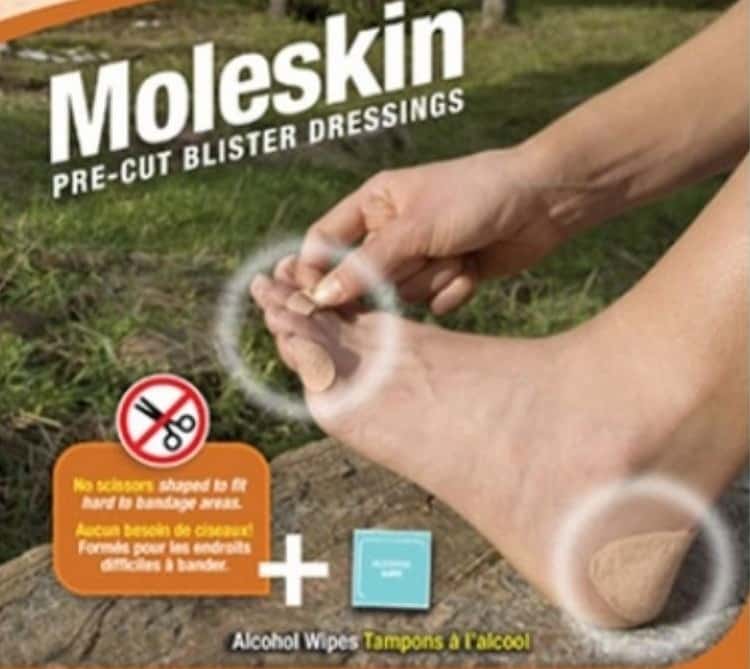
Typically, blisters are not life threatening but if they turn that way do your best to treat it. Watch for infection, keep hydrated, rest. In an emergency, be willing to be evacuated.
By all means have a small first aid kit with you at all times. The list included in this article is just a bare minimum.
Here are a couple free tips: don’t travel alone and tell people where you plan to be. If you need to be evacuated due to an infected blister it will be nice for someone to know where you are.
The most important thing is to have fun, be safe, take precautions and use common sense. These four components will go a long way to having a successful, enjoyable hiking trip.
In the words of Chief Seattle, “Take only memories, leave only footprints”. I hope you leave a lot of footprints and that they are blister free.





I agree the best way is to prevent blisters from forming on the first place. We already know what activities cause us to get blisters, especially the water blisters (hiking, running), so the best way is preventive care. Invest on the right clothing you need for your outdoor activities. Don’t use those cheap cotton socks when you can get those specialized running or hiking socks. I also use moleskin as added preventive care.
Did you know soaking your feet daily with tea can help toughen the skin on your soles, and prevent you from getting blisters? All you need to do is put a few tea bags on a bowl filled with hot water. Let it steep for a few minutes then carefully pour some cold water until it’s on the temperature your feet can stand. Do this for a few weeks, and your feet won’t be as susceptible to getting blisters!
In addition to the tea remedy, you can use Aloe Vera. Aloe vera is a natural healer and hence very effective in treating foot blisters.
That is very true, Earl. Prevention is always the best. You should consider wearing hiking/trekking/camping socks made of merino wool, which has insulating and thermal regulation properties that ensure your feet are moisture-free, thus blister-free.